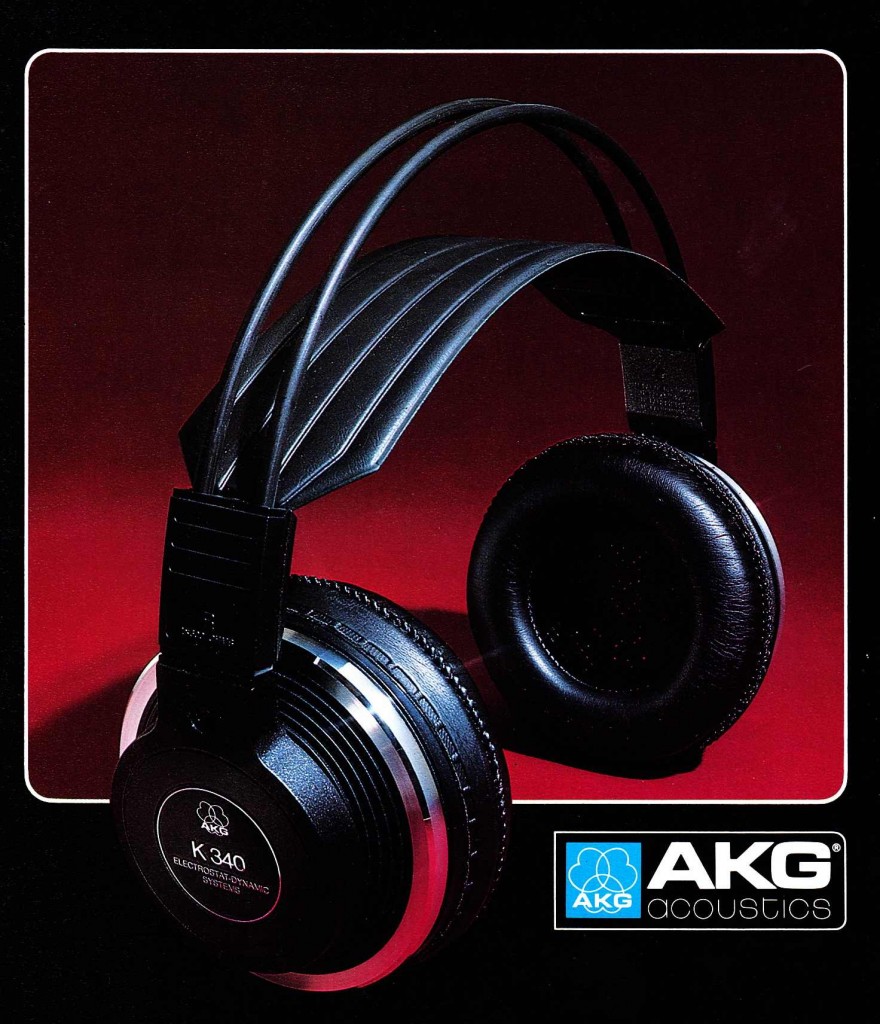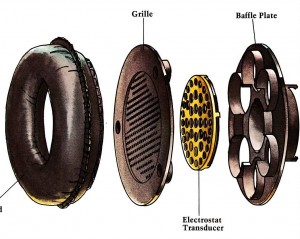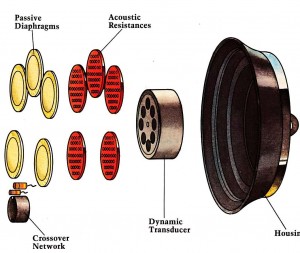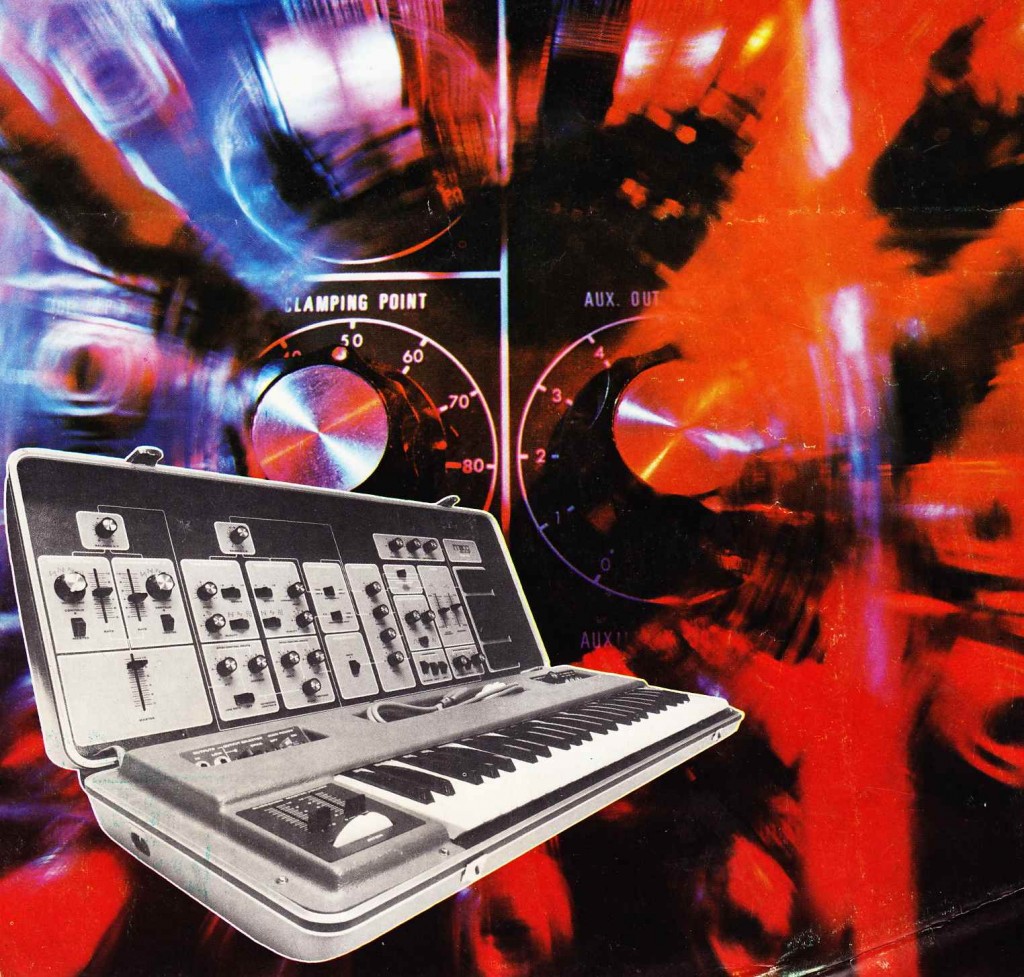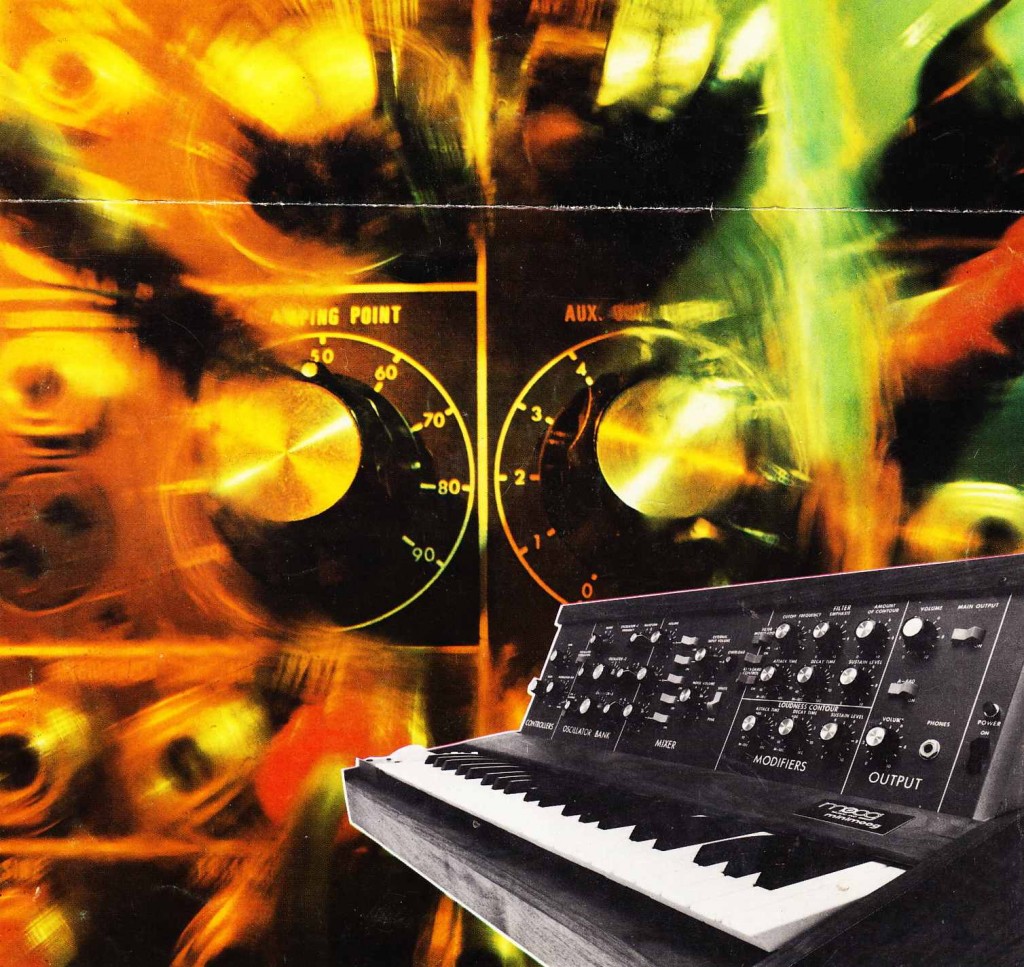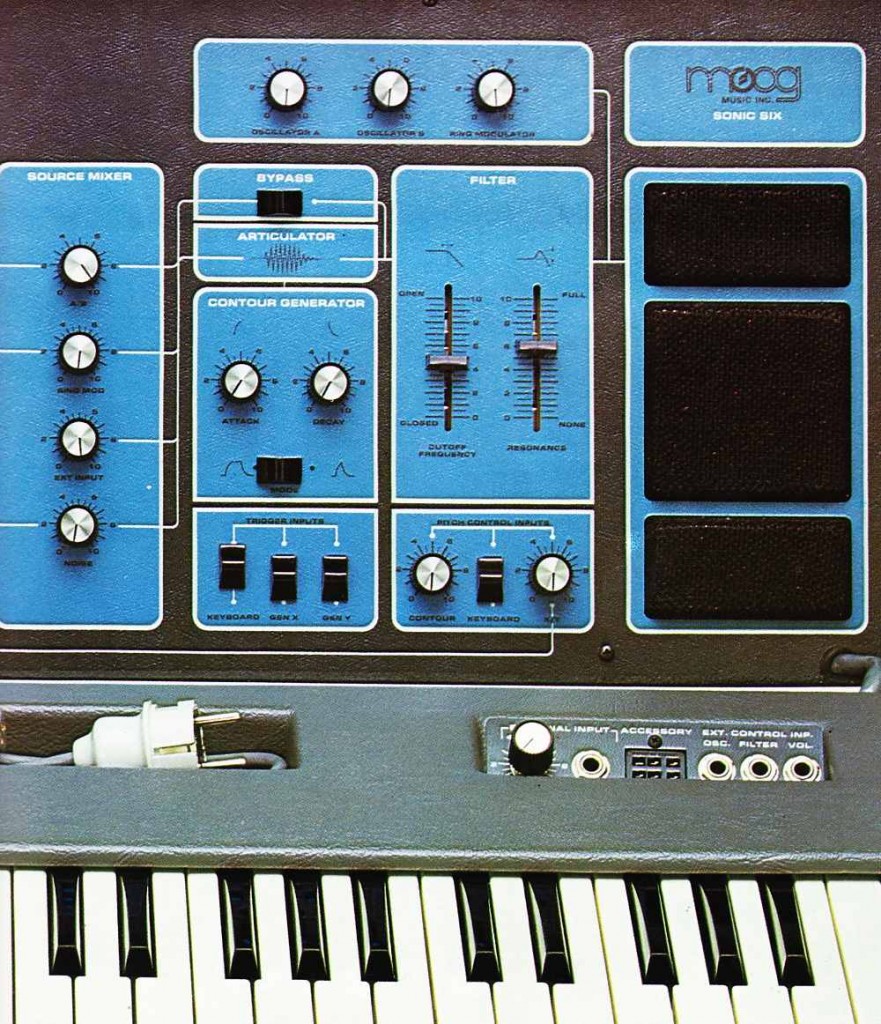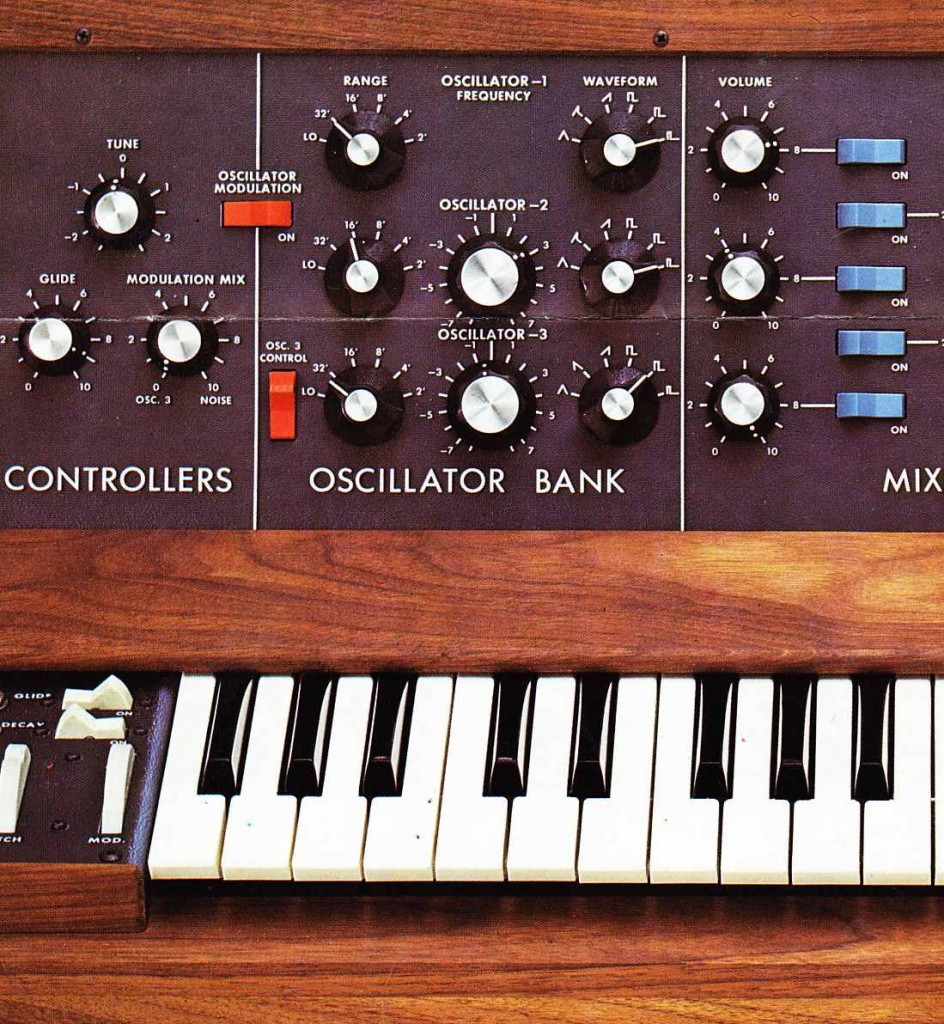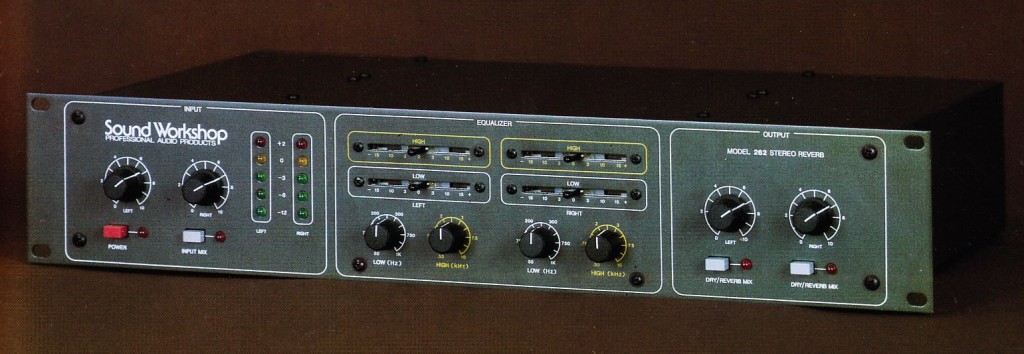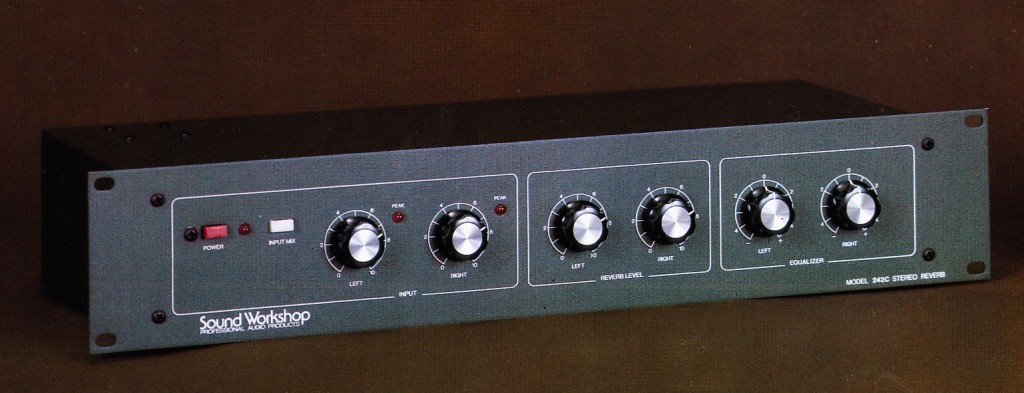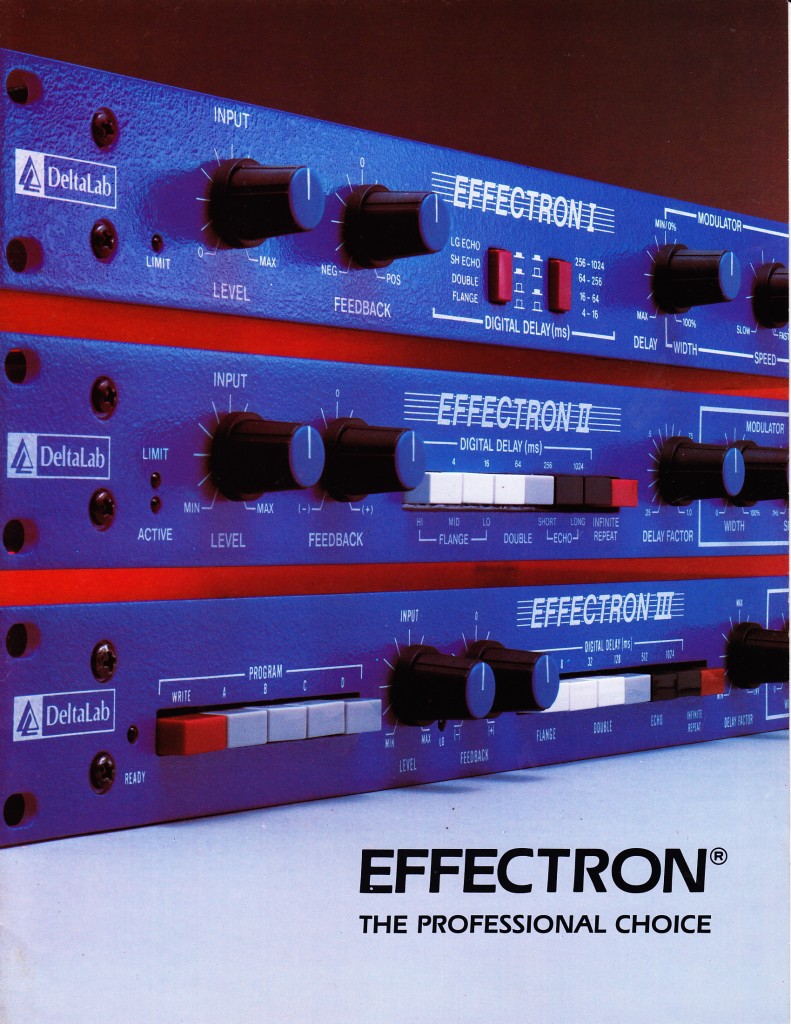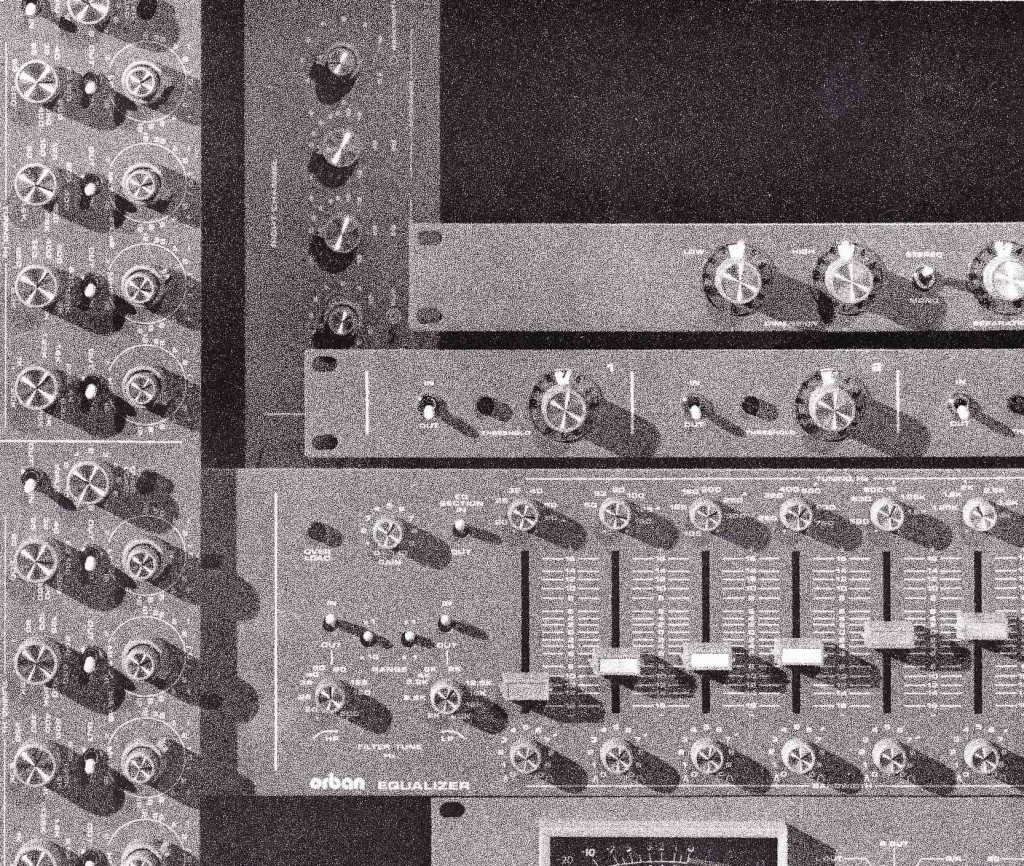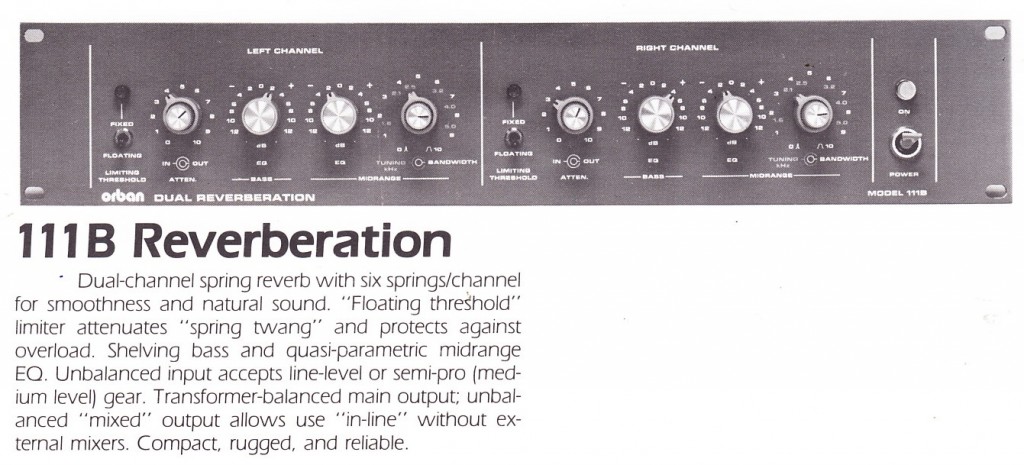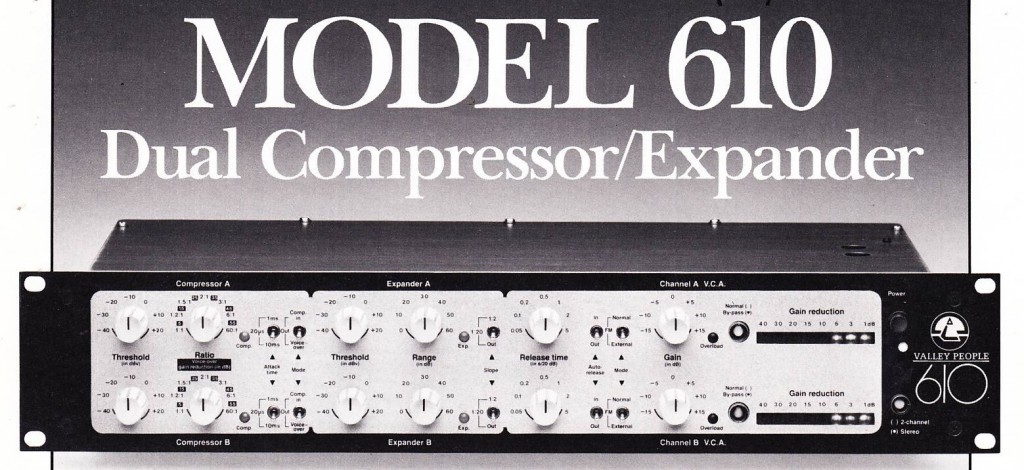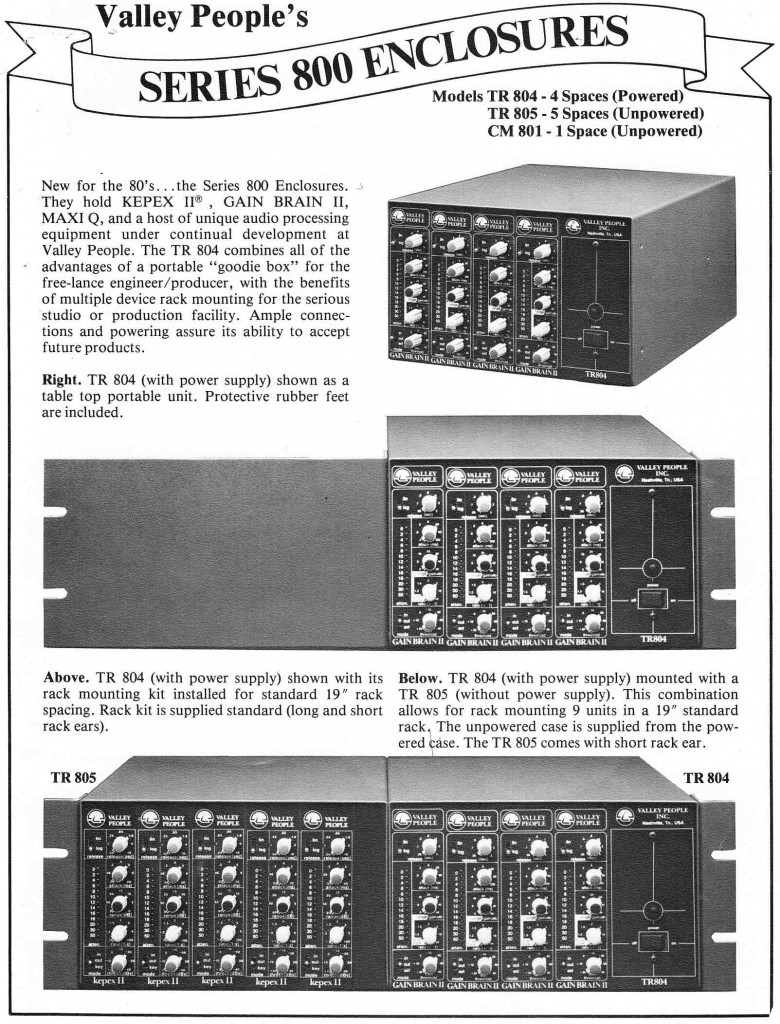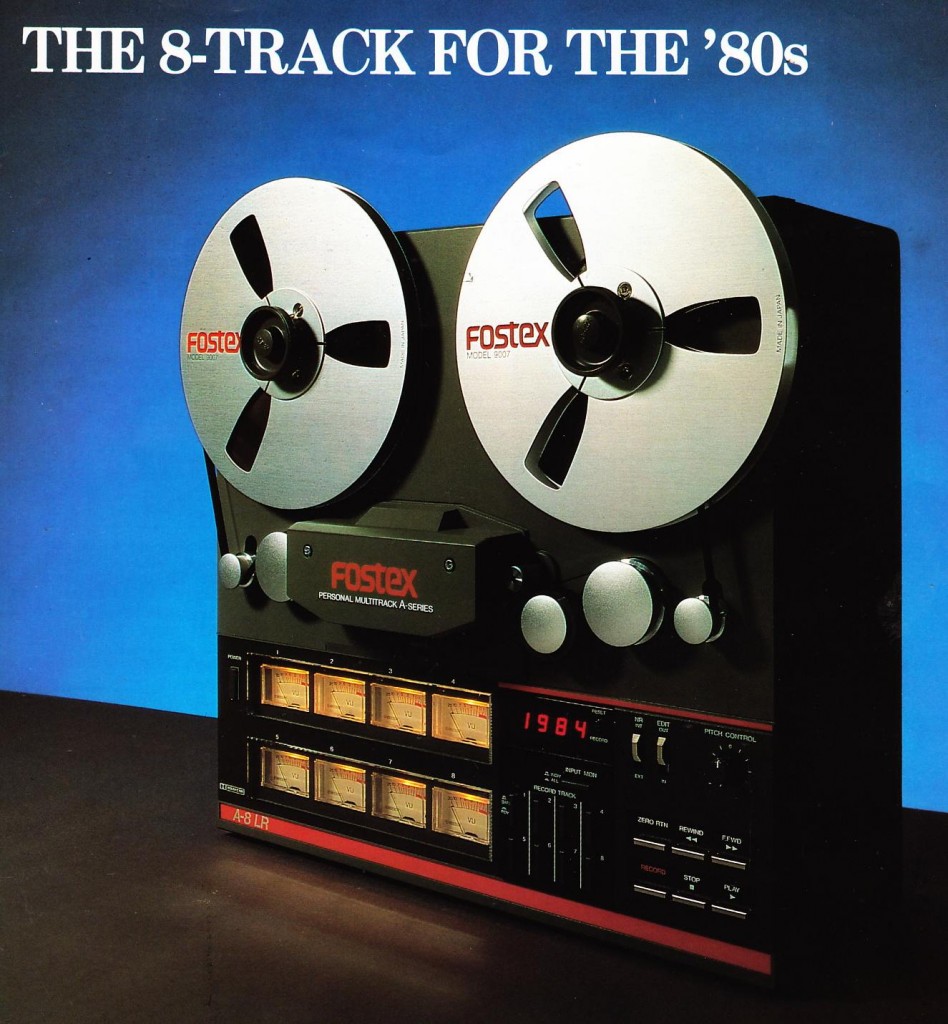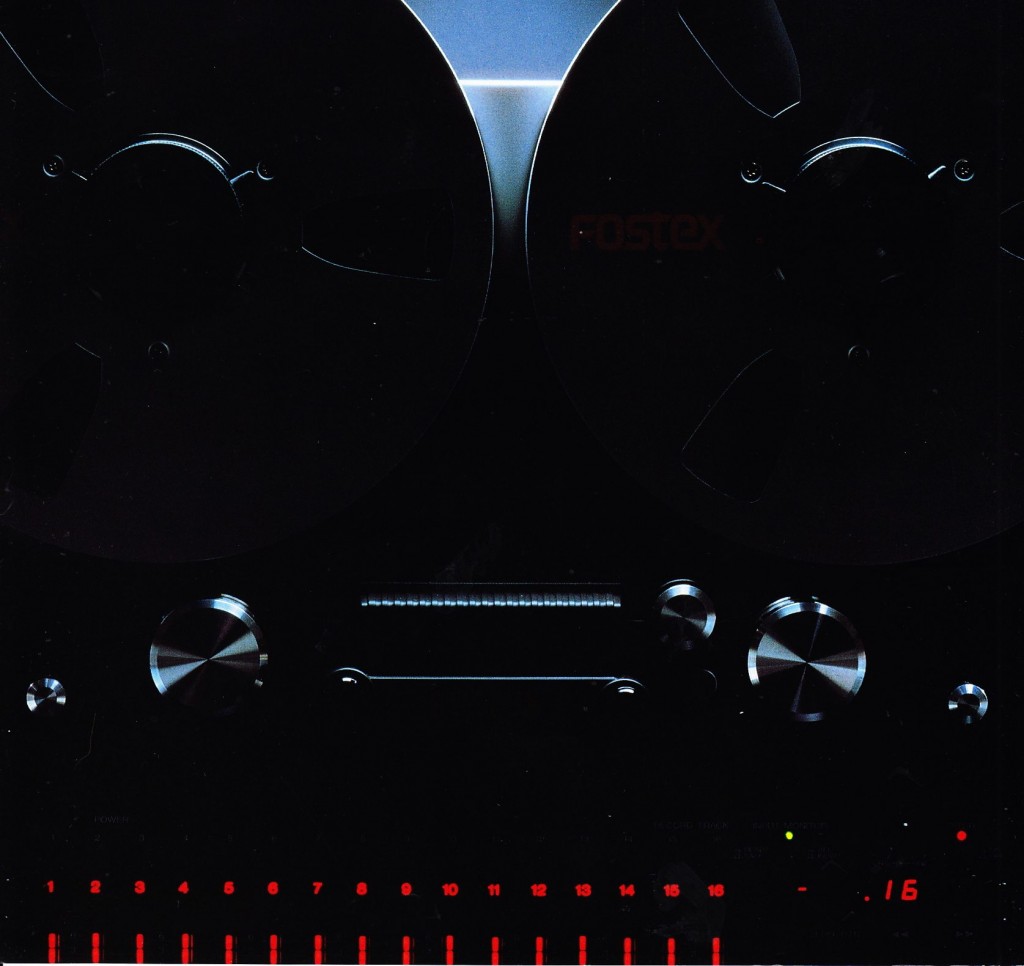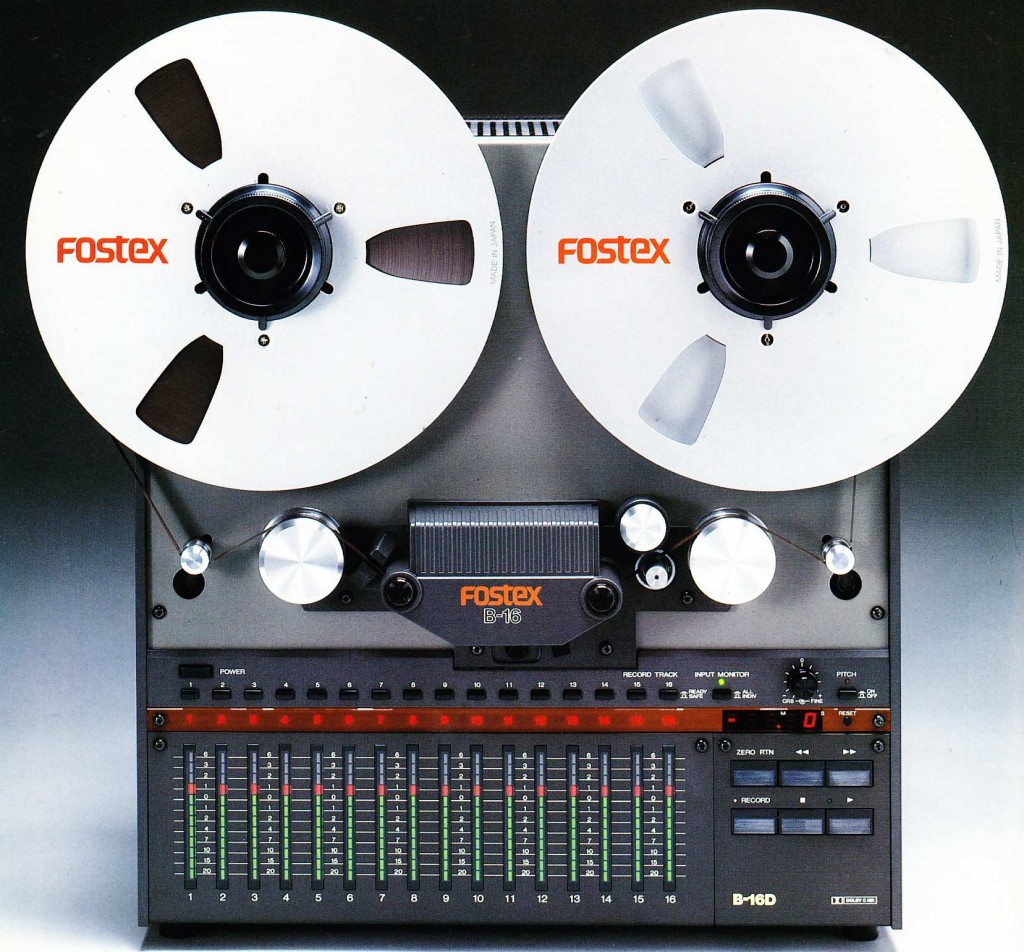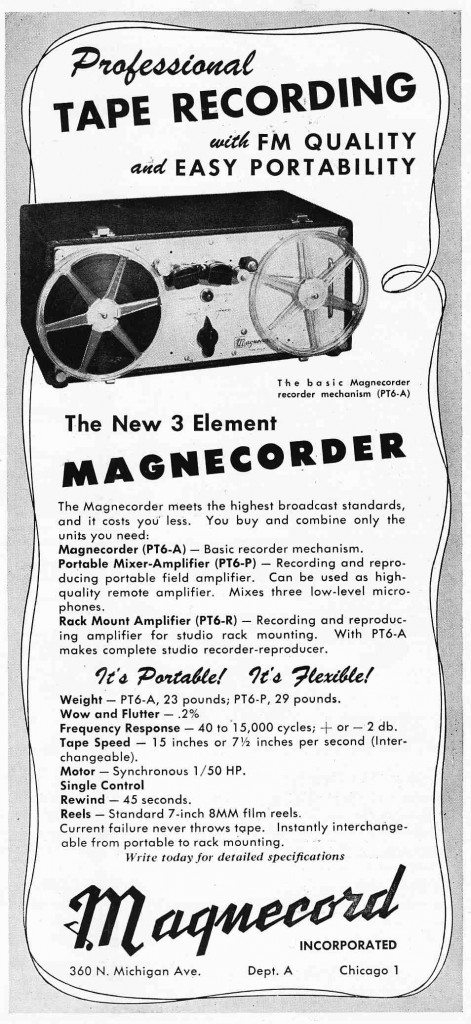 The earliest advertisement for the Magnecorder tape machine that I have seen. BTW get ready for a large collection of original Magnecord, INC documents from one of the company founders: on this site: soon.
The earliest advertisement for the Magnecorder tape machine that I have seen. BTW get ready for a large collection of original Magnecord, INC documents from one of the company founders: on this site: soon.
In the sixth and final installment of this survey of pro audio of the 1940s, as related through the pages of Audio Engineering magazine, we’ll look at some of the more interesting pieces of equipment on offer.
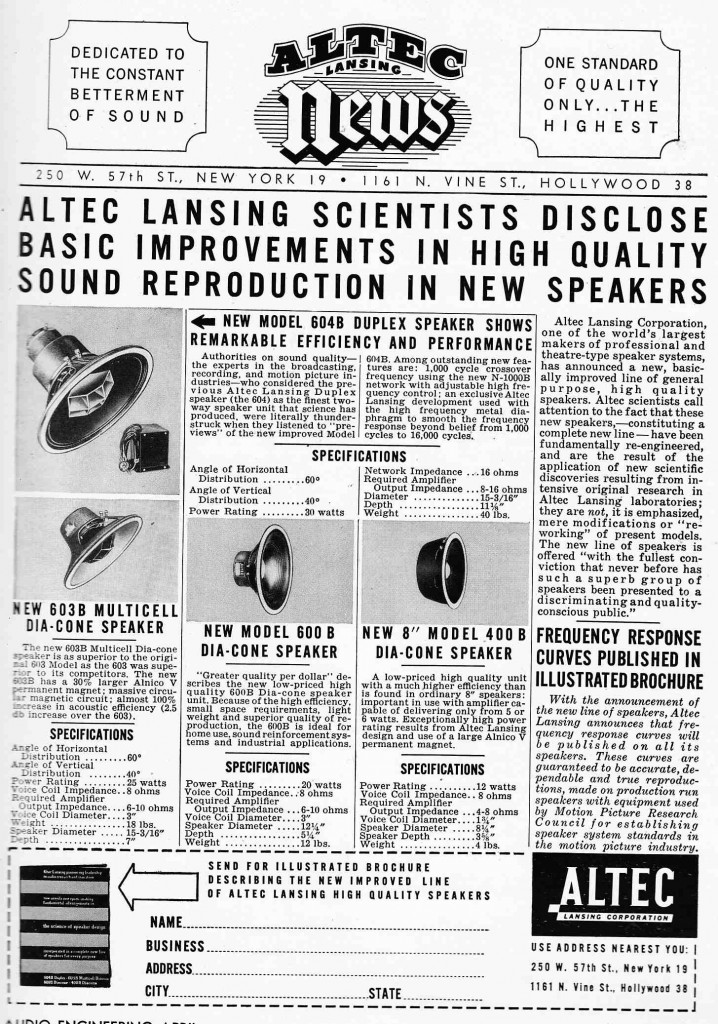 1948: Altec announces the 604 duplex loudspeaker. The 604 would become a staple in recording studios well into the 1970s.
1948: Altec announces the 604 duplex loudspeaker. The 604 would become a staple in recording studios well into the 1970s.
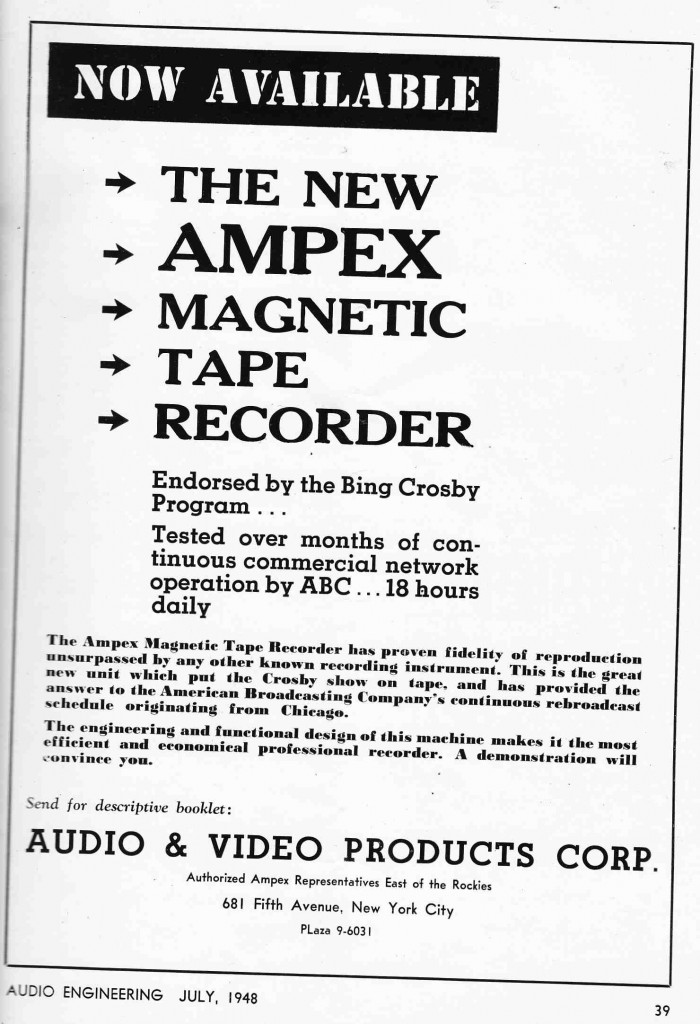 …and Ampex announces the tape recorder that would change the world. in 1948 it offered performance that would not be outdated until the 1980s.
…and Ampex announces the tape recorder that would change the world. in 1948 it offered performance that would not be outdated until the 1980s.
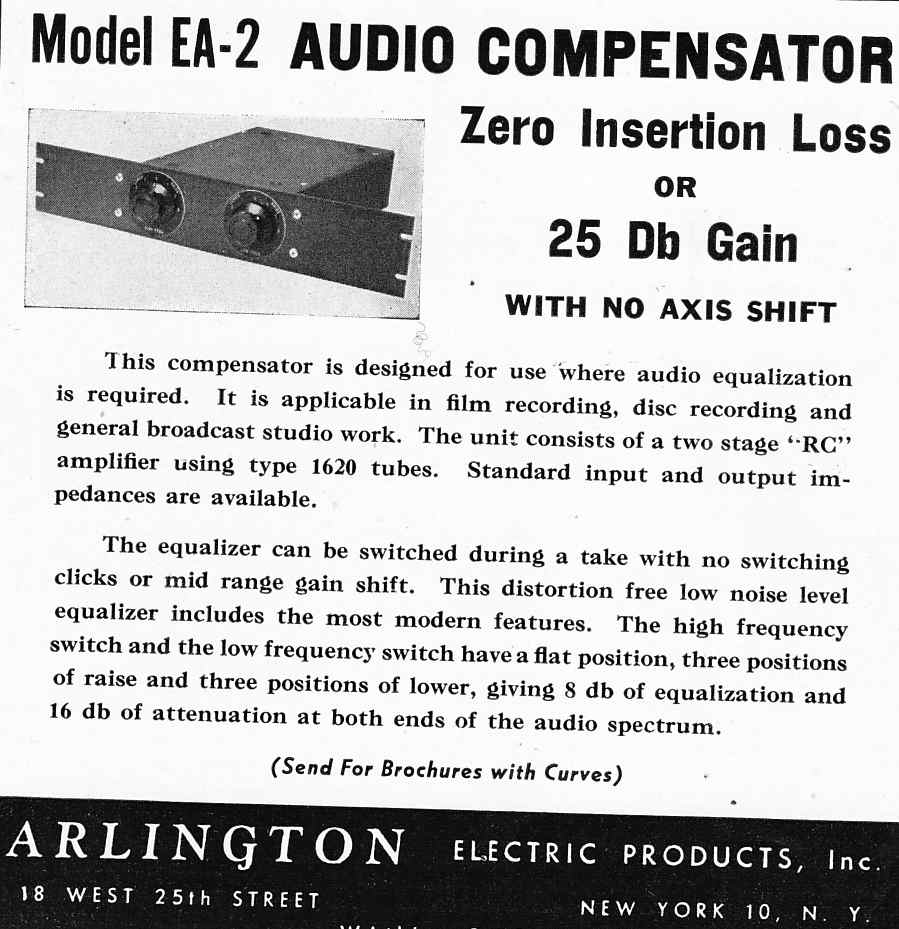 The Arlington EA-2 ‘Audio Compensator,’ an early active EQ. Well, maybe ‘active’ is the wrong word, but unlike other equalizers of the era, it functioned without insertion loss. I would love to see the schematic for this unit if anyone has one to send over…
The Arlington EA-2 ‘Audio Compensator,’ an early active EQ. Well, maybe ‘active’ is the wrong word, but unlike other equalizers of the era, it functioned without insertion loss. I would love to see the schematic for this unit if anyone has one to send over…
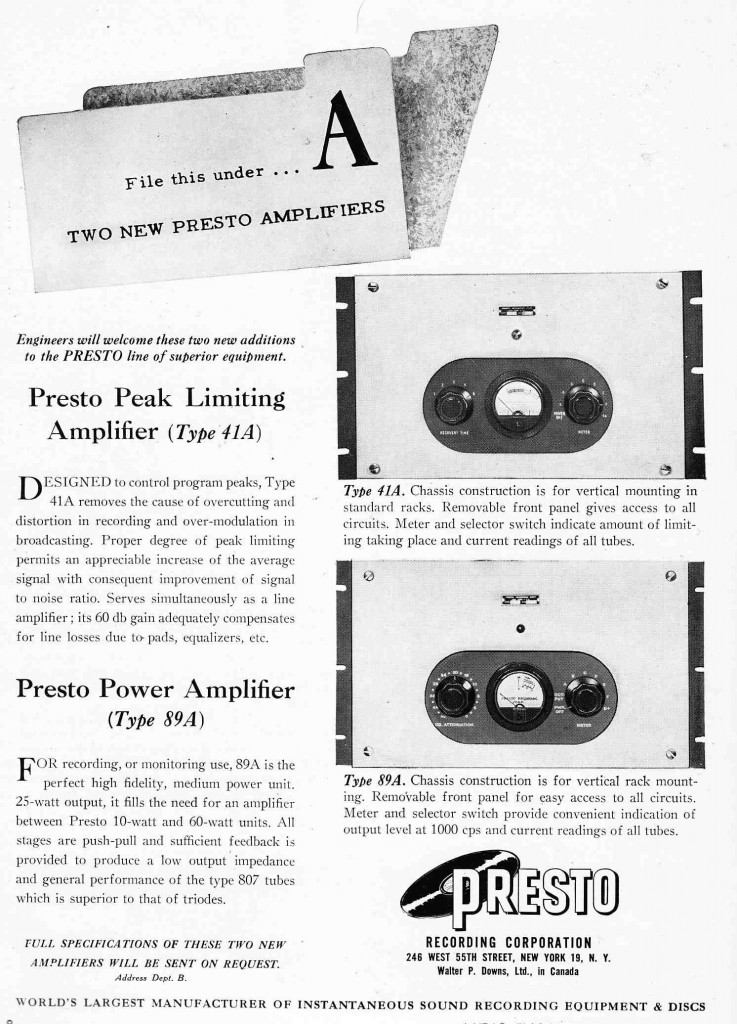 The Presto 41A limiter and 89A amplifier. These units were intended for master-disc cutting.
The Presto 41A limiter and 89A amplifier. These units were intended for master-disc cutting.
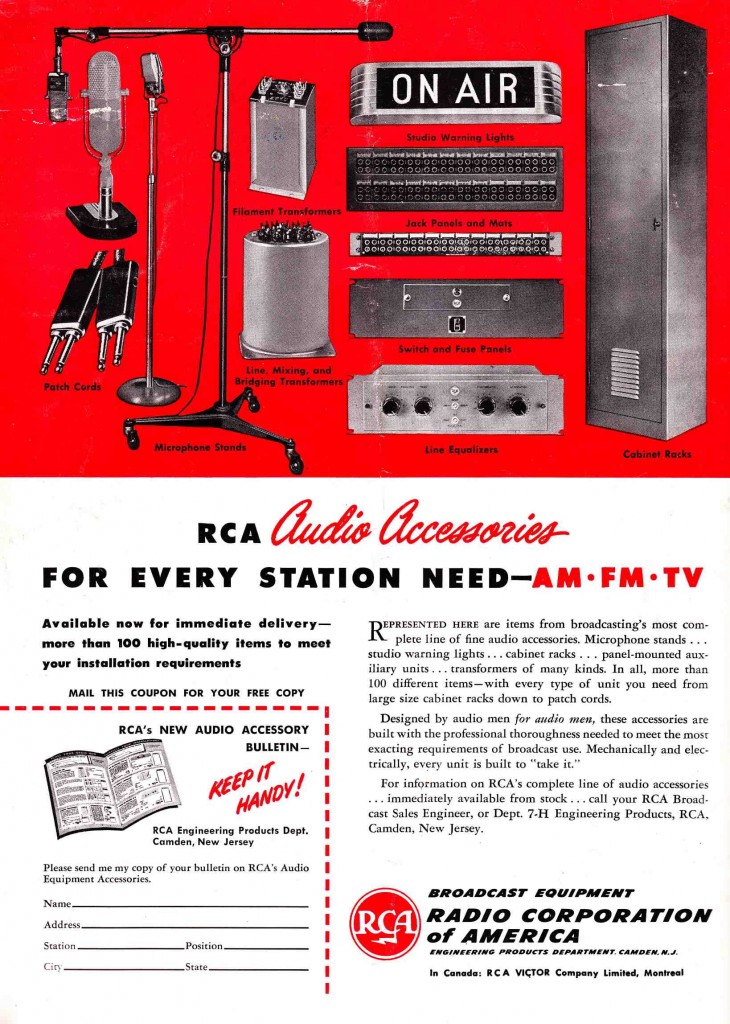 RCA jacks, panels, stands, and racks of the late 1940s.
RCA jacks, panels, stands, and racks of the late 1940s.
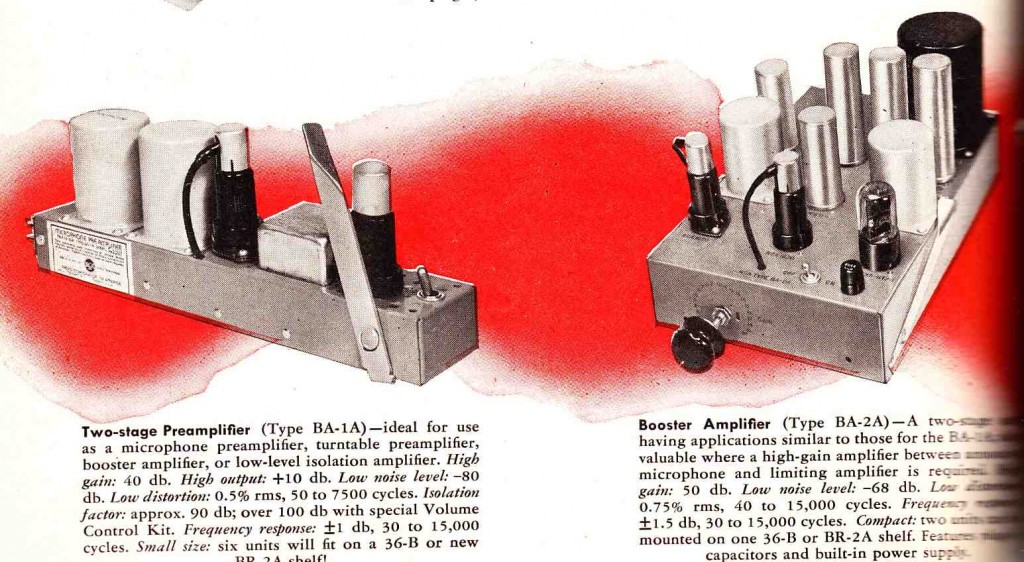 OK this scan really sucks but I was excited to find an ad for my beloved BA-2 preamp. My advice: buy a UTC A25 on eBay and build a BA-2. Simple and excellent.
OK this scan really sucks but I was excited to find an ad for my beloved BA-2 preamp. My advice: buy a UTC A25 on eBay and build a BA-2. Simple and excellent.
